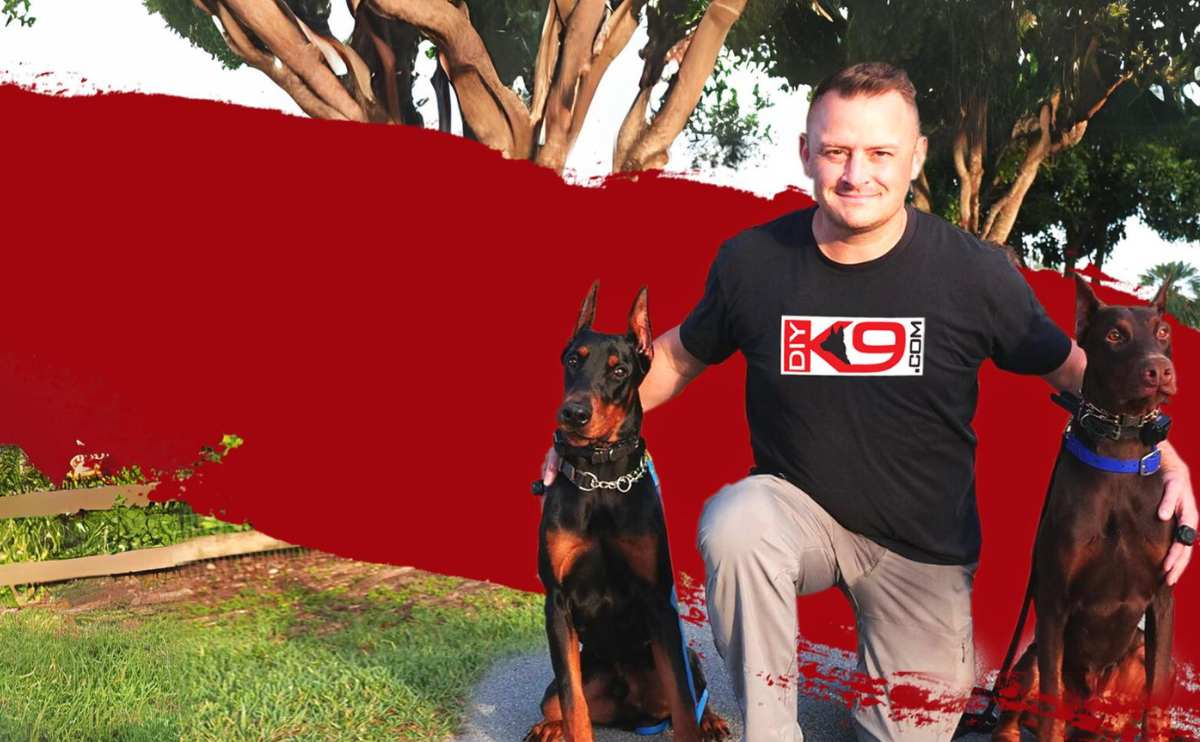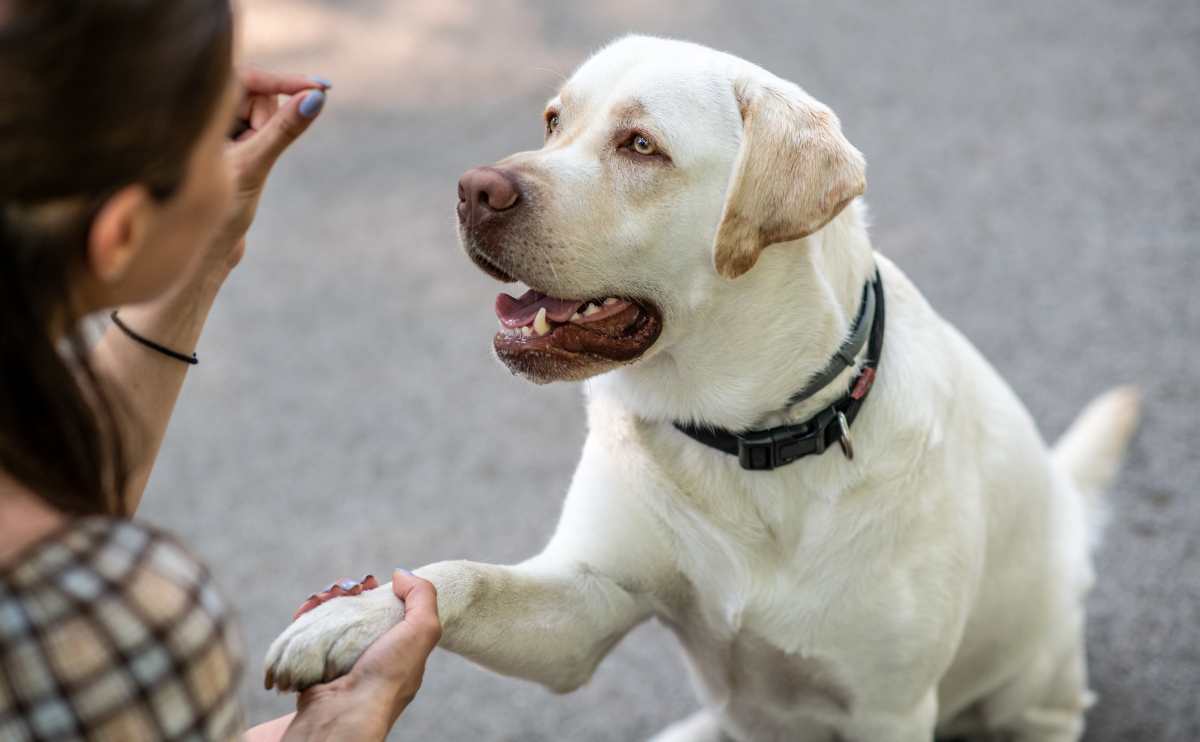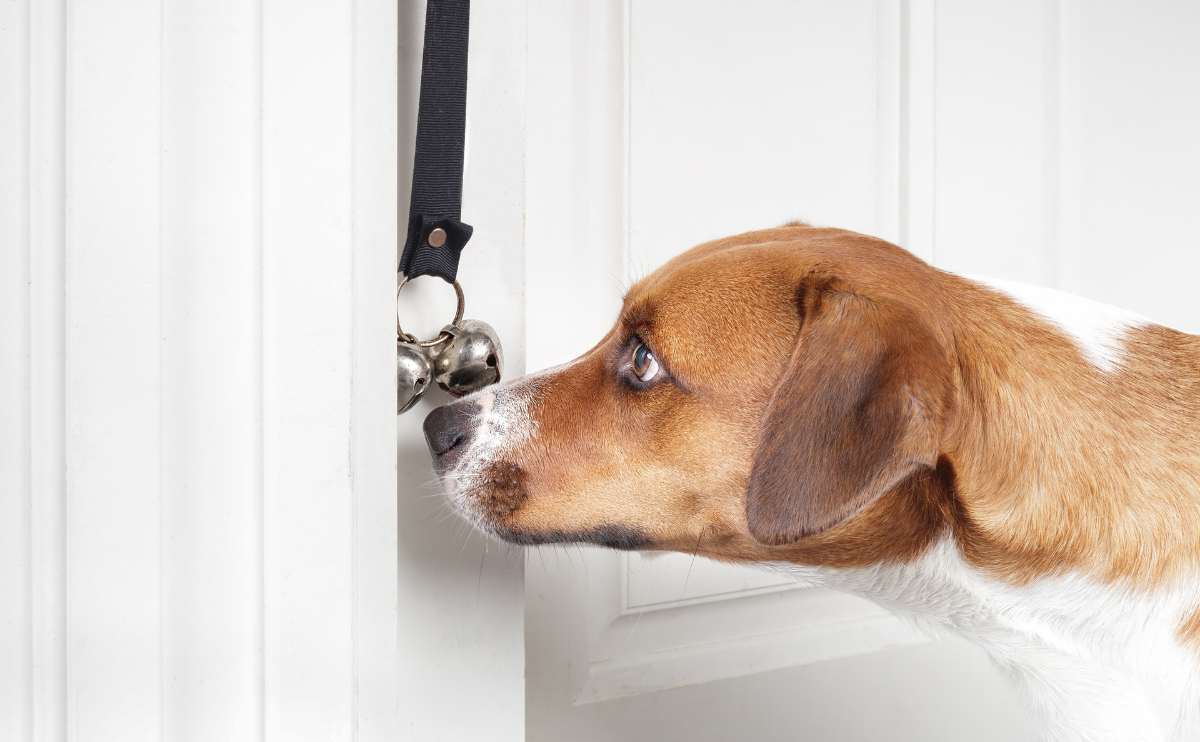When you purchase through links on our site, we may earn a commission. Here’s how it works.
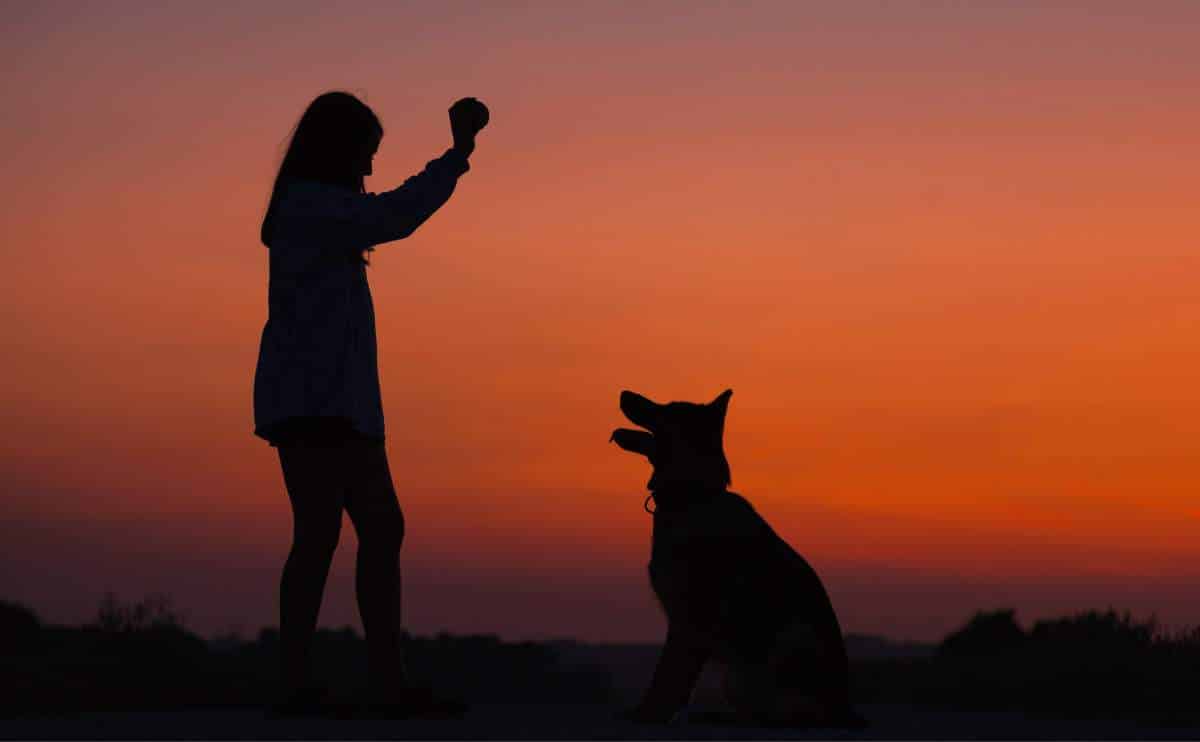
You just brought home a new dog and are not sure where to start. Sure you need to make sure you have the right food, a collar with ID tag, and leash along with a comfy place to sleep but you will also need to teach it how to behave in your home and around others. Sit, stay, down, release — these are all important obedience commands that you will need to communicate with your dog properly, so we think it is essential to explain how to train these desired behaviors.
11 Basic Dog Commands
One of the most frustrating aspects of bringing a new dog home is teaching obedience. Obedience training can include a wide variety of skills including housebreaking, not biting, listening and responding to your commands, and more.
While the variety of commands you may desire to teach may differ, teaching obedience will ensure a well-behaved dog who understands basic commands and what is expected from it. Using these commands to teach your dog will help get your relationship with your pup off on the right paw.
Pro Tip: If you aren’t having any luck or need extra help, we recommend using an online dog training course. It’s an affordable and effective way to improve and advance your dog’s obedience.
Train Your Dog To Sit
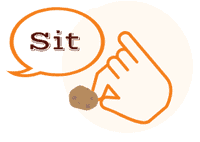
The “sit” command is the most desired command. It not only allows you to interact in public with a well-behaved dog but it also gives your dog knowledge of what it is expected to do.
Teaching your dog to sit is a relatively easy command when using treats to teach the command. Take a treat between your thumb and pointer finger and hold it directly over your dog’s nose while saying the command “sit.” Then move the treat back while keeping it close to your dog’s nose.
As you move the treat backward, your dog should follow the treat with its head causing it to sit down. Not every dog will sit immediately but repeat the process until your dog does as it is asked to do. When your dog does sit, quickly give it a treat and provide praise.
The “sit” command can also be done without a treat using the same motion. Be sure to use even more praise as the reward for a completed “sit.”
When you have become a veteran of the “sit,” you can tell your dog to sit without a treat. However, if your dog ignores your first command, you should sit your dog in position without repeating the command.
Lie Down

The “down” command is usually the second obedience command taught in obedience class because it easily follows the “sit” position. After your dog has learned “sit,” the “down” command adds just one new step.
As your dog is in “sit”, hold the treat in front of your dog’s face and slowly move it to the ground saying the word “down.” It may take a few tries to get your dog to follow the treat down to the floor, but if you hold the treat close enough to the dog’s face, it will lie down.
Stay (In Place)

The “stay” command is one of the more difficult commands for your dog to grasp and one of the more frustrating commands to teach. You should always teach the stay command after “sit” has been mastered. To get your dog to “stay”, place it in a “sit” and make a “stop” gesture with your hand in front of your dog’s nose while saying the word “stay” and take a step back.
To begin, your dog will only be able to hold a “stay” for a few seconds. Try to break the “stay” by saying “good boy/girl” and giving your dog a treat. To teach a good “stay,” you should slowly extend the amount of time that you expect your dog to “stay” beginning with a couple of seconds. If your dog breaks their “stay” before you allow it, take your dog back to its original place, command it to “sit” again, and request your “stay” again.
Come

The “come” command is generally taught after “stay” to invite your dog to return to you. This command is relatively easy after your dog has perfected “stay.” When your dog is in a “stay” command put a reasonable distance away, you can either use praise like “good boy/girl come!” or offer a treat to encourage your dog to return to you.
Wait

The “wait” command can be a complicated command for dogs that are food driven. The most common use of “wait” is to teach your dog not to dive nose-first into its food, not to take treats from strangers, or not to jump straight out of the car when the door is opened. Teaching a “wait” command is more of a matter of discouragement, unlike most other commands.
Put a treat on the floor in front of your sitting dog, tell it to “wait” and hold up an index finger. If your dog leans down to try to take the treat, place your hand between your dog and the treat or take it away, and repeat the process. Some people choose to make a discouraging noise when they see their dog moving towards the treat (such as “ah ah!”), this can be helpful in making a transition from placing your hand in front of your dog to being able to perform a “wait” command until release.
Release (After Wait)
The release is the second half of the “wait” command. After your dog is successful with “wait” you need a way to signal to your dog that it is free to break the command. The “release” command does not have to be the word “release” it can be anything such as “okay,” “let’s go,” or whatever you please. Releasing your dog from any command is as simple as offering a treat or offering praise.
Often people smack their knees and use an encouraging voice or wave a treat to get their dog to break the command. Just be sure to be consistent in your use of the established release word.
Off
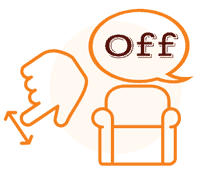
The “off” command has multiple applications but is generally used to get your dog off furniture or other places it should not be. The “off” command is generally easier to teach when your dog is somewhere you do not wish them to be. For example, if you aim to keep your dog off the bed wait until it is sitting on it and tell it “off” while pulling the dog off the bed. Make sure to pull gently or use a shooing motion to make sure that the dog understands it should not be “on.”
The “on” command can be taught using the opposite technique, usher your dog “on” while saying the word “on.” Always be sure to reward the behavior you are asking your dog to perform.
Leave It

Somewhat similar to the “off” command is “leave it.” This command is usually applied to items found while walking. For example, if you are walking and your dog makes a move for a piece of trash you should exclaim “leave it” and pull your dog’s leash lightly to pull it away from the trash.
The key to the “leave it” command is to pull your dog away from the item you want your dog to leave and eventually your dog will associate the moving away from the item with the “leave it” command.
Place

The “place” command is not always taught in basic obedience classes; however, it can be a helpful command. The “place” command is used to encourage your dog to stay in a certain place. Usually, the “place” in question refers to the dog’s bed.
Another example of using the “place” command is to discourage dogs from begging. If your dog is begging, lead it over to its bed and exclaim “place” in a firm tone. You can also follow this command with “stay,” but it should not be necessary.
If your dog follows you away from its “place,” take it back and walk away again. Just like with “stay” this can be a frustrating command to teach, but perseverance is the key.
No, To Discourage Inappropriate Behavior

The “no” command is an important one to teach your dog, just like it is with young children. “No” should be used to discourage any behavior that you don’t want your dog to engage in.
For example, if your dog is begging for food, you would exclaim “no” in a firm voice and take it to its “place.” The key to the “no” command is to remove your dog from the item you are discouraging it from.
Control Your Dog In Public With “Heel”

The “heel” command is important in maintaining control over your dog in public. Some dogs are particularly headstrong and can pull you down the street if they are not taught to “heel.” While your dog is on a leash, begin walking. When your dog begins pulling, exclaim the “heel” command in a firm voice, and pull your dog close to your leg.
The goal of “heel” is for your dog to walk alongside your leg without pulling forward or dropping back. Encourage your dog to “heel” by gently pulling the leash to align with your walking stride. Working on the “heel” command while carrying a treat in your hand is an effective way to encourage your dog to pay attention.
Dog Training Commands Infographic
Here’s a summary of the tips above for easy reference.

3 Dog Obedience Tips
Know Your Dog’s Limits
When embarking upon a journey to train your dog, it is important that you know the limits of your dog. A young dog is unable to comprehend the skills that an adult dog may pick up on; likewise, a senior dog may be a little slower in catching on. The individual nature of your dog also comes in to play when you decide to teach your dog obedience.
If you have a dog that is easily distracted it may take them much longer to pick up a command than a dog that is a dog that is eager to please. In general, dogs that are praise or food motivated are more easily trained, and dogs that have a history of being mistreated or abused can be much more difficult to train.
You Play A Large Part In Your Dogs’ Obedience Training
Your dog is not the only factor to take into consideration when you are training in basic obedience; you also play a huge part in your dog’s training process. If you are considerably impatient or easily frustrated, then you are going to want to approach teaching your dog obedience in short lessons that focus on one command at a time. You can also benefit from enrolling in a small obedience class that will allow you a reprieve if you are feeling overwhelmed.
Time & Patience Are Of The Essence
The training process with your dog is a process that takes both time and patience and a willingness to learn for both of you. Your dog is just as reliant on your ability to teach its commands as you are reliant upon your dog to learn its commands. The most important factor for you as an obedience trainer is to make sure that you show your dog exactly what you expect from it. Showing your dog what you expect is sometimes a matter of positioning your dog into the position you are asking him to assume and sometimes it is a matter of rewarding the correct position when it happens.
Find the Best Dog Training Treats
Housebreaking Your Dog
The first and most important obedience lesson for many dog owners is housebreaking. Puppies should begin housebreaking at approximately 7 ½ to 8 ½ weeks old. Ideally, puppies should not be separated from their mothers until at least 8 weeks of age so you should not be faced with a puppy younger than this anyway. Sometimes older dogs need to be housetrained too when they are rescued from a shelter or rescue organization, housebreaking an older dog involves the same process as housebreaking a younger dog.
Old Dog vs. Young Dog
You may find that an older dog latches on to housebreaking at a faster pace than a younger puppy. Housebreaking is most efficiently taught by taking your new puppy outside at any point at which you believe he or she needs to use the bathroom. Most frequently puppies will need to go after waking up, after playing, after eating, after drinking, as well as first thing in the morning and first thing at night. Larger dogs will need to go to the bathroom considerably less than puppies throughout the day, but when housetraining they should be taken outside after sleeping and after eating as well as first thing in the morning and first thing at night.
Reward Good Behavior
If you can stay at home with your puppy taking your puppy outside every two hours and feeding your dog a treat when it uses the bathroom outside will quickly housetrain your dog. One of the most important aspects of housetraining is rewarding the appropriate behavior.
If you are not able to stay at home with your puppy, you should make every effort to return home to take your puppy out to the bathroom every few hours or hire a dog walker who can do this for you. When you are not home, you should crate your puppy to prevent accidents throughout the house. As a general rule, any dog will be reluctant to relieve itself in the area where it sleeps, but this should not be used as an excuse to make your puppy hold it. The bladder of an 8-week old puppy is large enough to “hold it” for only three hours at a time.
Read more details on How to Housebreak Your Dog
Training A Dog Not To Bite
No biting is more of an action taken to discourage puppy biting than it is an actual obedience training command. Puppies have a habit of biting anything and everything and this behavior should be discouraged from the beginning. Discouraging biting can be done with a variety of ways. One of the most used methods of discouraging biting is to firmly say “no” and replace the hand or fingers that are being bitten with a toy that it is acceptable to bite.
Use Positive Reinforcement
The dog’s snout should never be smacked to discourage biting, aside from the fact that negative reinforcement is not an effective training mechanism; smacking the dog’s snout can even encourage a firmer grip. Puppies chew to ease their teething discomfort and replacing the item being bitten with an item that is acceptable is the best way to discourage a negative biting behavior. One other method that is recommended by some trainers is to take your thumb and place it over your dog’s tongue gently holding the bottom jaw with your other four fingers. While holding the tongue, tell your dog “no” firmly and then let go. Repeat this process if biting continues.
Learn what to do if your dog bites someone
3 Options For Teaching Dog Obedience
Taking part in an obedience class with other pet parents can also be helpful in that you will have someone to commiserate with as well as measure your progress against. If obedience classes are not for you, never fear, you can always begin to teach your dog at home yourself or hire a one on one trainer to teach you and your dog obedience in private lessons.
There are three main types of options to choose from when it comes to teaching your dog obedience.
Obedience Classes
Regardless of the age of your dog, obedience classes could be a good way for you to teach your dog obedience. These types of classes are offered at multiple locations and are often offered in veterinary clinics. These classes involve a single teacher who works with a group of dog owners and their dogs in teaching obedience. These classes are group oriented much like children’s classrooms. Owners are taught obedience commands and how to encourage their dogs to obey. One at a time after being practiced, each owner will exhibit their dog’s ability to perform the task at hand.
Group obedience classes are affordable and allow for socialization and exposure to other people. Often these classes also provide new pet parents with human friends who can share their experiences with them as their dog ages. However group obedience classes can result in less one on one time for problem behavior. Plus, these classes don’t always focus on everything pet owners want to know simply because they have so many dogs to focus on at one time.
One-On-One Obedience Training
One-on-one obedience training is significantly more expensive than group obedience classes. They ensure that your dog receives all of the attention. These classes can take place in the home as well as in other locations and are ideal for older dogs, dogs with problem behaviors or dogs that are not friendly with other dogs.
One-on-one classes allows a trainer to focus on your individual dog’s needs. These classes allow for more practice of obedience commands than a group class. Dogs that have aggression issues with other animals can receive obedience instruction via this method of teaching. Learn more about dog aggression towards other dogs.
Individual training allows for owners to build a bond with their obedience trainer. Dogs that do not have socialization trouble will not receive exposure to other dogs and people through this type of class. These classes are considerably more expensive than group classes.
Boot Camp Obedience Training
Boot camp is a little more unconventional when it comes to teaching dog obedience. However, it is also a very effective method. Boot camp situations involve a trainer taking the dog to their home or training facility for a specified period of time and working with the dog one on one. Many people argue that this type of training is troublesome because it relies on someone else commanding the dog. In some instances, it can be very successful. Some boot camp settings involve owners paying daily visits to practice commands with their dog. These types of training situations are particularly successful for dogs that have significant obstacles to overcome such as aggressive tendencies or fear responses.
Boot camp classes are often offered by only the most educated and experienced in canine obedience. These camps allows for a trainer to directly address individual dog’s dispositions and difficulties. Regardless of any obstacle a dog experiences it can still receive obedience training while also focusing on overcoming these obstacles. Boot camp type training allows for much faster progression through obedience training. However, boot camp obedience is the most expensive method of obedience training and owners miss out on a significant portion of their dog’s education.
Learn about an Online Dog Training Option
What Type Of Obedience Is Best For Your Dog?
Every dog and every owner is different, and that means that no “one” type of obedience training is best for everyone. Understanding what type of training is right for you and your dog is a personal decision based on what you both need and expect from the training experience. There are some factors that you will want to consider when choosing a method of teaching obedience to your dog.
- Is your dog aggressive against other dogs or people? If so then you cannot responsibly take your dog to a group obedience class.
- Does your dog have specific concerns that cannot be addressed in a larger class such as extreme fear issues? If so, then you will need to be aware that these issues cannot be addressed in a traditional obedience class and need to be handled before class. In these cases, it is best to enroll in a fearful Fido’s class or bring in a specialty trainer to conquer these concerns before enrolling in a large obedience class.
- Are finances a concern for you? Instead of skipping over obedience training opt for a more affordable group obedience class to begin your dog on the road to obedience and socialization.
- Are you limited on time? We all experience limited time as a result of work schedules and other factors, and sometimes these can affect our availability to attend training classes. If this is a concern for you, investigate private trainers who can work with your schedule or boot camp options.
Ultimately finding the right obedience training solution for you and your dog involves weighing out what you need, what you can afford and how your dog will react to a specific training solution. If you are unsure how to address your dogs training needs because they are a newer addition to your family, ask your vet for their advice. Often your vet will be able to assess just what your dog needs based on their experience with other dogs with similar behavior patterns.
Patience Is Key In Training Your Dog
There are a significant number of commands that you can teach your dog, but the important thing is to look at your life and see what the most important ones are for you and your dog. While the basics such as “sit” and “stay” are important for any lifestyle, commands such as “place” are not needed for every family.
Whatever you decide to teach your dog in obedience training it is critical to act as a leader, be consistent with your requests and teaching techniques and, most importantly, make sure that you remain patient! If you have a puppy, check out our puppy training tips and if you need an expert’s help, we recommend this online training.
Tagged With: